Over the last few months, a number of friends have been talking to me about something that they describe as hopefully the beginning of a revolution here in Israel. Quality wine available at the supermarket – much like it is in every country in the world. The two wines that have been causing this commotion are brought in by a company called Egoz Muscat – which is subsidiary of the Shaked company, a major importer of wine and spirits here in Israel. Egoz-Muscat is their kosher arm and deals only with the import of kosher wine from around the world.
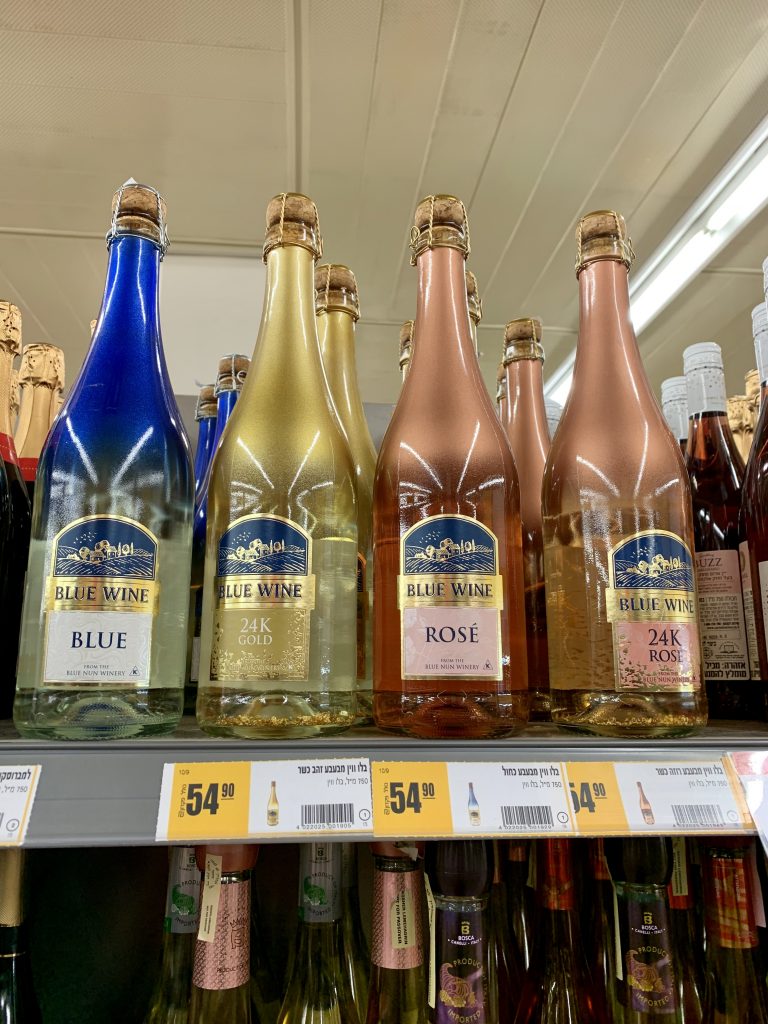
When hearing about these wines, I tended to dismiss them. First, I recognized Egoz-Muscat primarily as the importer behind Blue Nun wines, which hit the market here about two years ago. This is a mass market German brand, not really a serious wine at all. In the UK, the non-kosher sells for about five pounds a bottle – which is roughly 22 shekels. Here, for whatever reason, these wines sell for more than double that – and – because the Israeli market really knows no better – the wine sells even at this ridiculously inflated price. In fact they started out with a single bottle in the line and have expanded it to include all of their sparkling wines as well (all crap – marketed specifically to appeal to the under 25 party set – one of the bottles even has gold flakes in it – just ridiculous). From a price perspective, there is absolutely no possible excuse for the cost here. It is mass produced. It is no more expensive to put a hechsher on Blue Nun than it was to put on Welch’s grape juice in the US – and probably less. It’s just thievery. And the wine sucks – really, truly sucks. To the point that I hesitate to call it wine. Whatever you think about the Bartenura Moscato – this is worse.
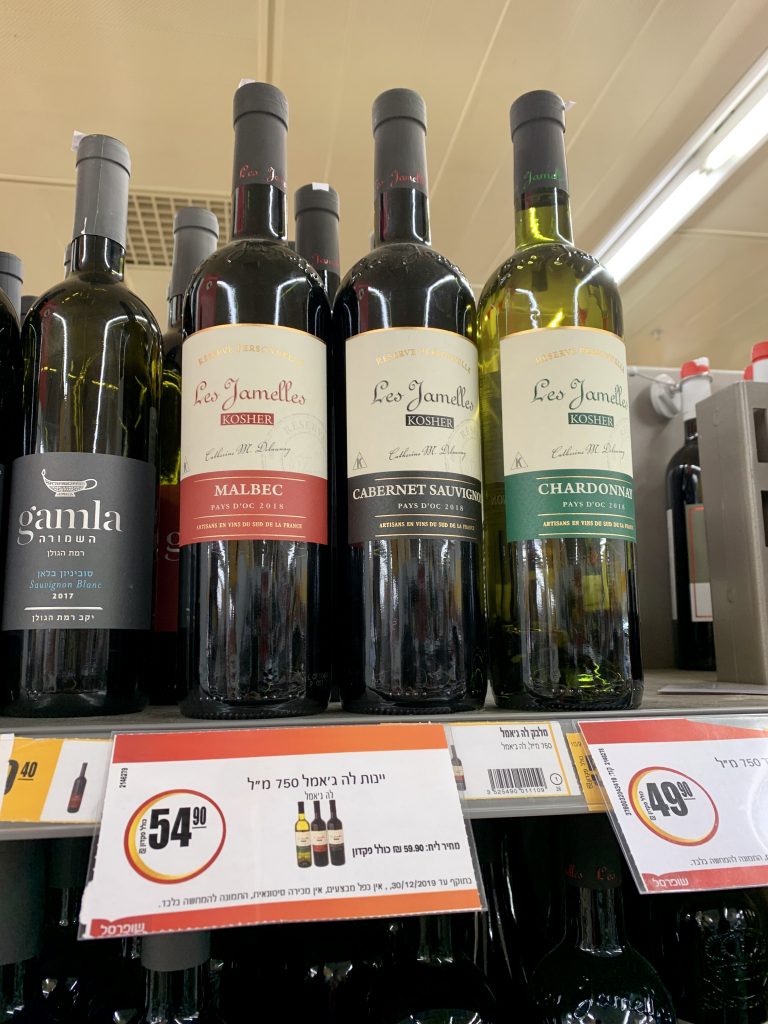
I’ve also tasted some of their French offerings – specifically the Les Jamelles series, which I am pretty sure I had at the Jerusalem wine festival this year. Nothing good there. Even if these wines were 4 for NIS 100, I wouldn’t buy them, but at least then they would be in the ballpark of what you would expect a supermarket wine to sell for. But 54.90 on sale????? Nuts.
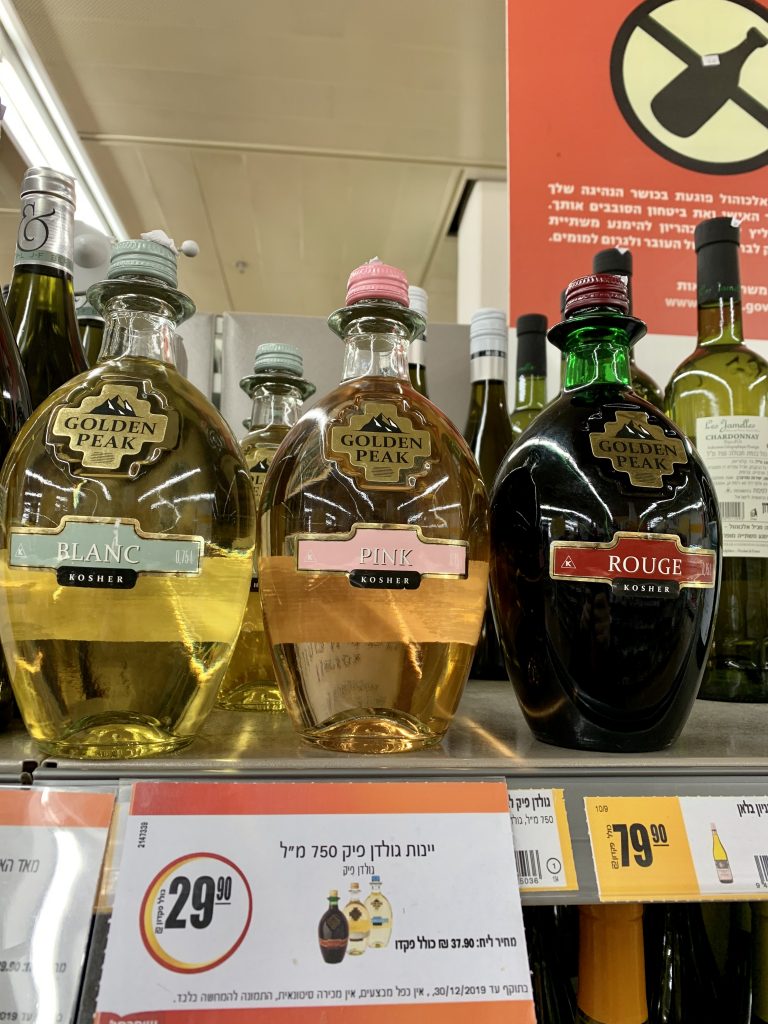
Other wines of theirs I have refused to taste – like the German Golden Peak series. I mean, come on. This is wine that in Europe probably sells for 2-3 euro a bottle. It is mass produced jug wine. NIS 30 on sale??
Therefore, when I first heard about these two wines a few months ago – one a New Zealand Sauvignon Blanc and the other an Italian Chianti, I thought to myself – thanks, but no thanks. But people started talking about how awesome these wines were. One of my friends even went so far as to write a post on Facebook about how perhaps this was the start of a change in the Israeli market – a revolution – in bringing affordable kosher wines to the supermarket. Still I resisted. But after my trip to the France and seeing the incredible job the Taiebs are doing in bringing kosher wine to the average French consumer at reasonable prices, I started to have second thoughts. Maybe this can work here too….? So I went into tasting these two wines with an open mind. A few days later, people started asking about a Beaujolais Nouveau that was being sold here, and lo and behold it was Egoz-Muscat that was the importer – and while I knew it wasn’t going to be a quality wine (Beaujolais Nouveau never is, as opposed to the various Beaujolais Crus which can produce some very nice wines), I figured what the hell – it is the season after all.
I tasted all three of these wines in ideal settings giving them each their due and therefore will be giving actual scores – and I’ll start with the best of them:
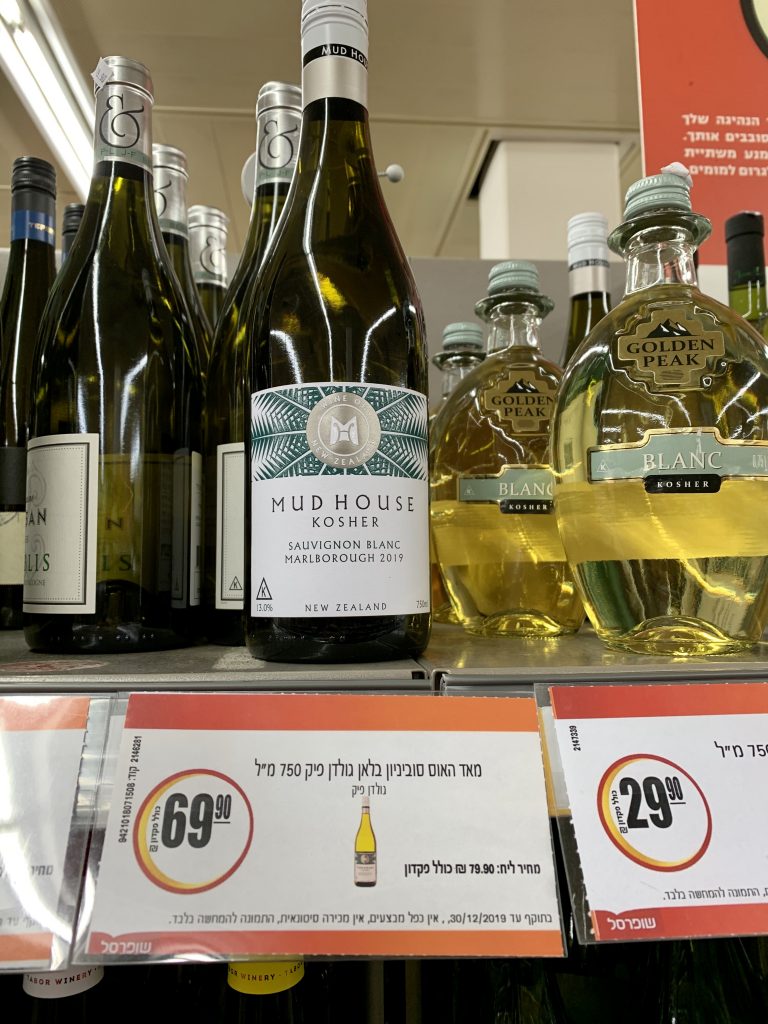
2019 Mud House Marlborough Sauvignon Blanc – I often talk about New Zealand style SB – and my dislike for the “cat piss” on the nose. But that is personal, and while I can’t help but let it factor into my score – I want to point that out. The wine is well made and fairly typical for this style. For the most part, you get grapefruit and gooseberry and of course the dreaded cat piss on the nose. All (except for the cat pee carry of course) through in the mouth, where this is really nice indeed. The acidity here is absolutely great – and tastes natural (as opposed to having it adjusted in the heavy handed way some are in Israel). The finish is long and full of pith and yet more acidity and something floral as well. Really nice. My guess is that the fact that it is NOT mevushal, as opposed to all of the other kosher NZ-SB’s allows for that freshness and acidity to really carry through. If it wasn’t for the nose here – I would likely be drinking this – and for fans of this style, on taste alone this is a winner.
But the real revelation here is that this producer has not tried to obfuscate the fact that it is indeed also a non-kosher brand. Wait? Do producers do that? Of course they do – in certain markets. Why? Well there are two possible reasons. One is BS, the other isn’t. The BS reason that people will try and sell you is so that consumers don’t get confused. A consumer may, G-d forbid, pick up the wrong bottle and consume it thinking it was kosher. Of course that is a load of crap. When the non-kosher variant is a selling point, distributors are all too happy to keep the kosher and non-kosher labels as similar as possible – and buyer beware. The real reason is actually something I just mentioned. When we are talking about top-notch Bordeaux wines that command luxury pricing, it is easier to justify the massive jump in prices for the kosher version. But there is no such premium on most wines in the world. New Zealand produces highly regarded Sauvignon Blanc – but it’s CHEAP. So if a kosher consumer were to check out what these prices are on a like bottle, they would be shocked at just how reasonable these wines are in the real world. And kashrut adds no more than 1-2 dollars or Euro per bottle. So people would start to ask themselves – why does this bottle cost so much? We have brands from New Zealand that seemingly have no non-kosher counterpart. Either these wineries produce a kosher-only label or are fully kosher – in any event it is because that is the lucrative way to market these wines.
I guess no one clued the people at Mud House in on this secret. And so, we can compare at least pricewise – their non-kosher and kosher offerings. In Israel they are actually priced identically (yes, both are available here) – about NIS 69-79 a bottle ($20). That’s no surprise. The Israeli wine market suffers from high pricing due to a crazily inflated kosher market – and offers no real locally produced low cost alternatives. Therefore, someone here is making out REALLY well. Why? Well, if you take a look at what this bottle costs in the UK for example (similar import tax and VAT to Israel) the retail price for a Mud House SB is £7 – or about 32 shekel. Why then is it selling for more than DOUBLE here? In terms of kosher, let’s say you wanna add 7 shekel for the kashrut. That gets you to 39 or so and you are still close to double so, bottom line, there is absolutely NO reason for me to buy this bottle. As it happens Goose Bay and O’Dwyers are hard to find here – and likely priced more. SOooooo – if you really are dying to have an authentic New Zealand SB from a recognized producer – and you don’t mind paying double what it’s worth – go for it! Otherwise stick with the MANY available local options that are as good or better, like the Tabor Adama Sauvignon Blanc – for less money.
One other note – especially for my non-Israeli readers. The certification on the bottle says Triangle –K, which is a sometimes controversial. In truth though, the Rav Hamachshir (certifying Rabbi) – at least according to the Mud House website – is Rabbi Yedidya Krauthammer, who is originally from Israel and worked for the Rabbanut in Petach Tikvah and now runs Community Kashrut in Australia – and that seems to be reputable as far as I can tell. I’m not sure how the Triangle-K got involved or what if anything they contribute to the process. In any event, it is counter certified by the Israeli Rabbanut – which means it’s good enough for me.
Bottom Line:
- Price: NIS 69-79
- For Aging: No.
- Would I Buy Again: No
- QPR Rating: Below Average
- Taste/Depth/Quality: Average
- Overall Rating (1-5): 2.5 (this would have been a 3 if the price was more reasonable or the nose was more in line with what I like)
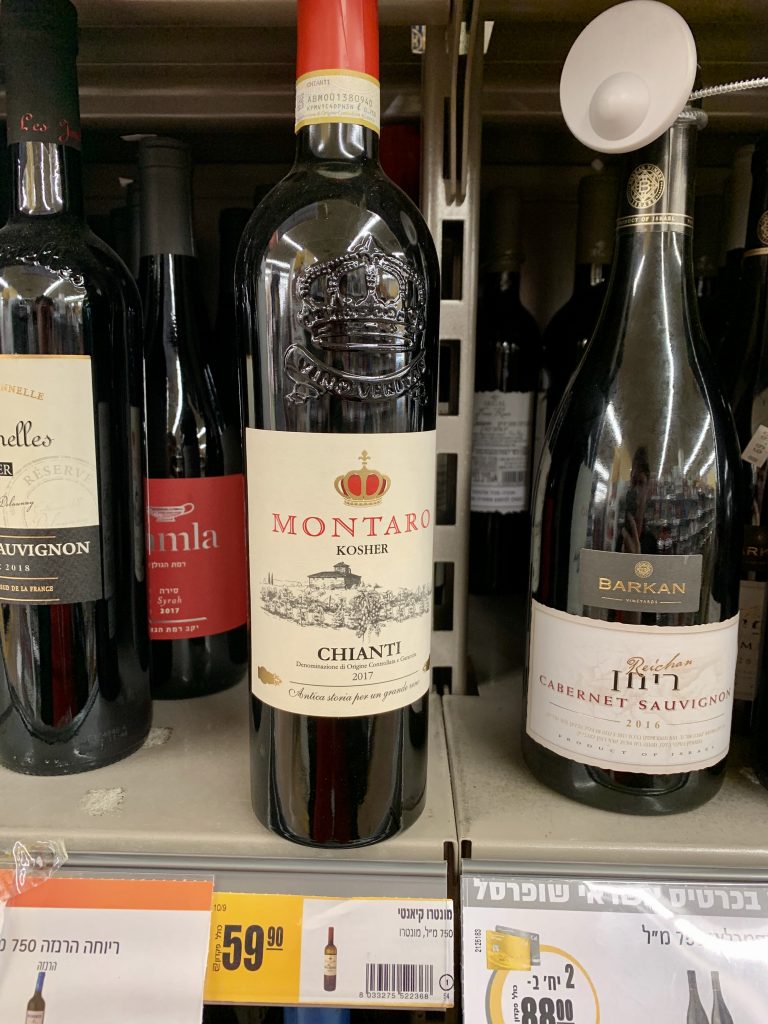
2017 Montaro Chianti – This was another wine that I had heard a lot about. A true Old-world style wine that goes for NIS 50-60, depending on sales. The nose on open is excellent. Forest floor, mushrooms overall. In the mouth the body here is medium plus. The earthiness and mushroom in this medium bodied wine is followed by red tart cherries. We have medium tannin and medium plus acidity that pulls it together nicely. The finish is rather short, but I can forgive that. What I cannot forgive is that the wine did not hold up for even the length of a meal. I had been drinking this with a pasta bolognaise and actually started while the sauce was finishing cooking. By the time I started eating, the wine had changed. The cherries were much more prevalent – still not bad. By the end of the meal a couple of hours later, it had gone sweet. By the next day, as one would expect with a wine in freefall, it had totally fallen apart and become disjointed. There are FAR better options out there in the 50-65 shekel range. Perennial favorites like the Vitkin Israeli Journey for about NIS 50, Elvi Herenza Semi-crianza for NIS 50-55, the Dalton Kna’an Red at about NIS 45 (all 3 of these available in supermarkets) and the Domain Netofa series for NIS 50-55 (still no supermarket love for Netofa). Now if this were a NIS 30 shekel wine, I would say pop, pour, and pray and be done with it. But at NIS 60 shekel, I expect a lot more.
Bottom Line:
- Price: NIS 50-59
- For Aging: No.
- Would I Buy Again: No
- QPR Rating: Below Average
- Taste/Depth/Quality: Average for the first hour and downhill like a bullet after that
- Overall Rating (1-5): 2
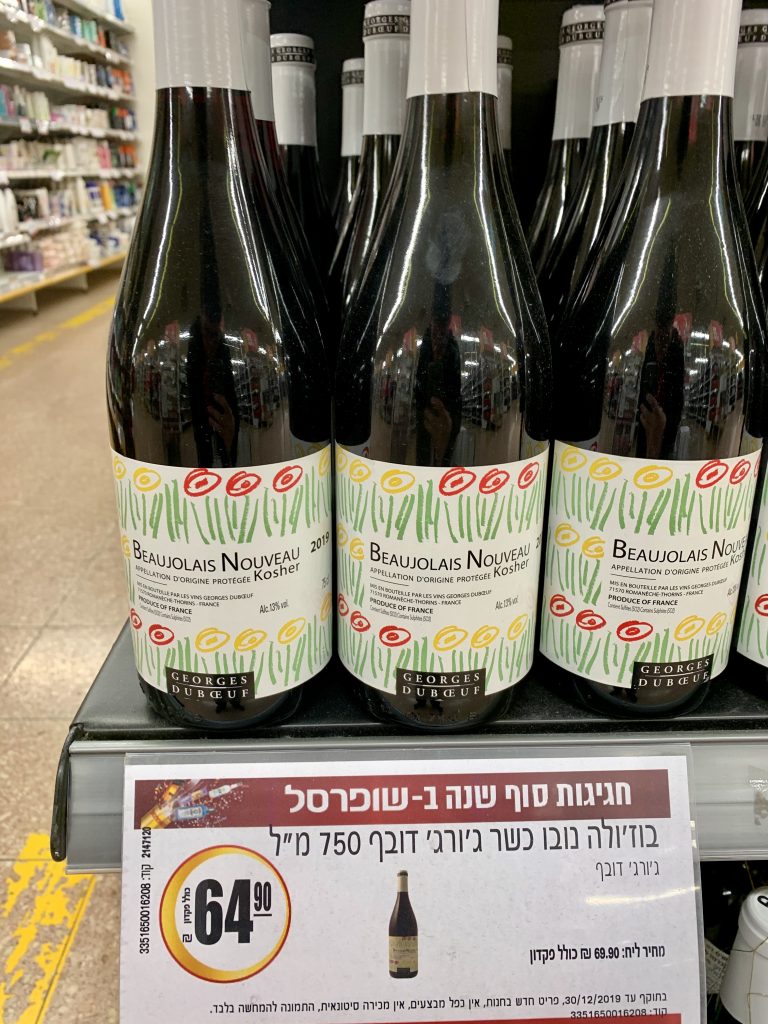
2019 Georges Duboeuf (Georges Dubœuf) Beaujolais Nouveau, Kosher – As this is really one of the best known producers of Beaujolais Nouveau, I figured MAYBE it has a chance. But let me save you the trouble. This is SWILL. I couldn’t get through the glass. And I tried. More than once. On the nose, there is a weird mix of bubble gum and strawberry. In the mouth, it is more black cherry than strawberry but really its bubble gum. On the finish, you have weird hints of banana. The wine has acid. I’ll give it that – but it is so out of proportion to everything else. The combination is simply off-putting. Here is the kicker – it goes for NIS 65. Are you kidding me?? This is a throwaway wine. At least it’s supposed to be. Under £8 in the UK for this wine (non-kosher) – How is anyone justifying this at 64 shekel?
Bottom Line:
- Price: NIS 64-69
- For Aging: No.
- Would I Buy Again: No
- QPR Rating: Absymal
- Taste/Depth/Quality: None of the above. I mean YUCK
- Overall Rating (1-5): Rather than write a score, I refer you to a scene in Animal House when Dean Wormer is reviewing the grades of the members of Delta House. Let’s just say that this wine did not exceed Mr. Bultarsky’s GPA
In summary – I hate to say it – but Egoz Muscat is FAR from bringing a revolution to the world of Israeli kosher supermarket wine. If anything, there is more of the same outrageous pricing – and, Mud House aside – questionable quality on most wines they sell. While supermarkets – Supersol specifically – are clearly expanding what they are willing to bring in and stock on the shelves and should be commended – the importers have not played ball for the most part.
If you really want good cheap wine that you can just walk into a supermarket and buy, for now I guess you need to live in France….
Pingback: Sommelier 2020 | Kosher Wine Unfiltered
Pingback: 2019 Faustino VI Rioja – and example of what is right… and wrong with Egoz-Muscat | Kosher Wine Unfiltered
Pingback: Around the World in Your Supermarket for 50 Shekels | Kosher Wine Unfiltered
Pingback: Zur Fully Joins the Supermarket Fray with 3 Excellent Entries - Kosher Wine Unfiltered